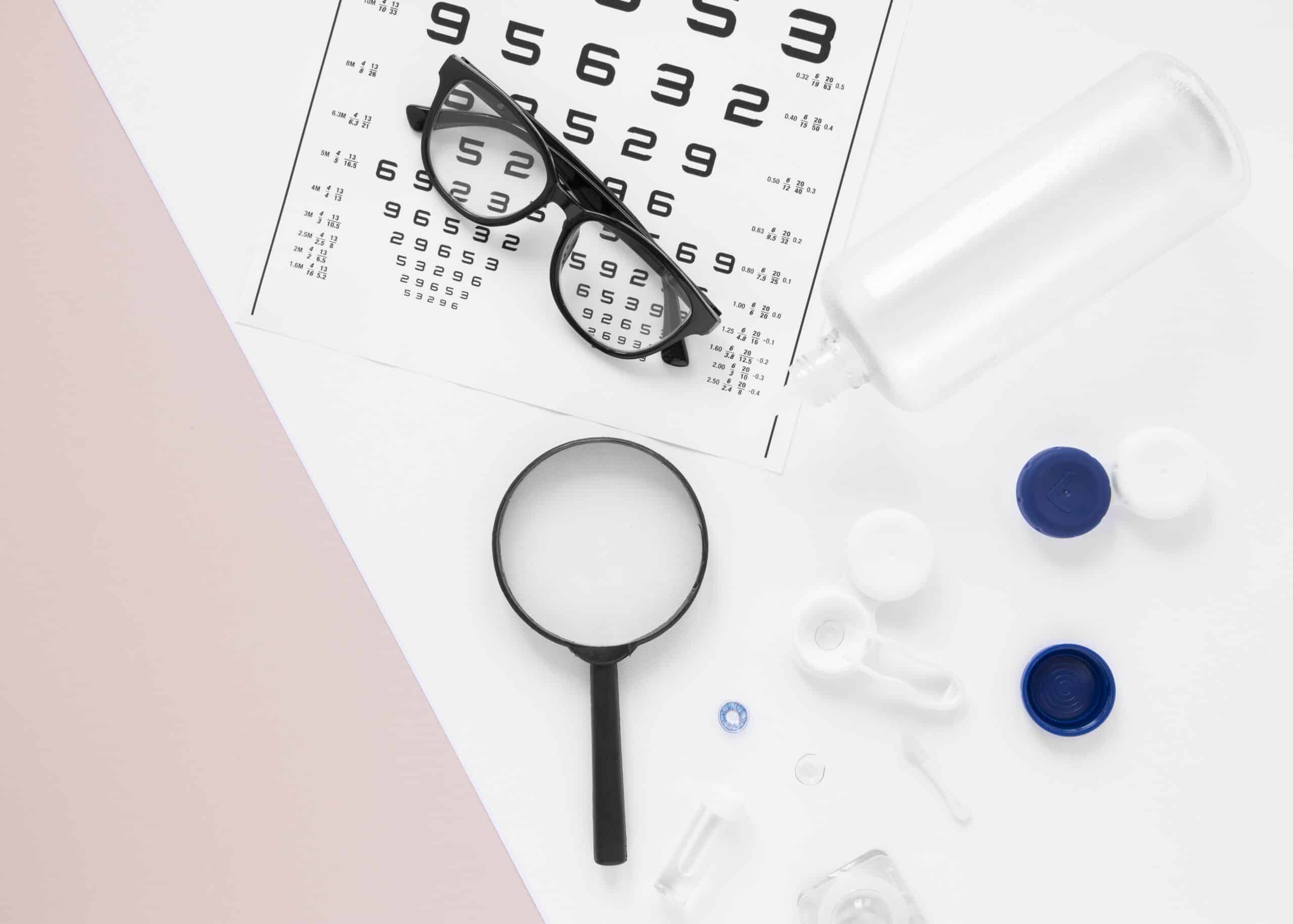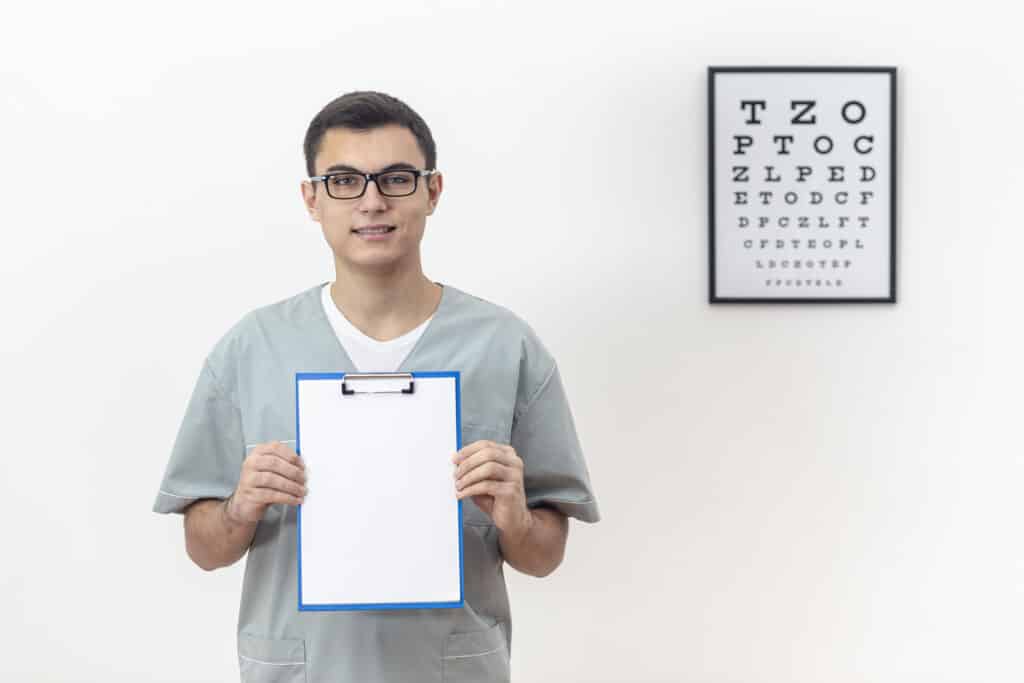IPD stands for Interpupillary Distance, and it refers to the distance between a person’s pupils. It is an important measurement that is required when creating eyeglasses or contact lenses. The IPD measurement is included in every eyeglass prescription, and it is an essential part of the process of fitting corrective lenses that will provide optimal visual acuity.
When an optician or an ophthalmologist writes Eye Glass Prescription or contacts, they will typically include the patient’s IPD measurement, along with information about the strength of the lenses, the lens material, and any other necessary details. The IPD measurement is necessary because it allows the glasses or contacts to be created with the correct size and spacing between the lenses to match the patient’s natural eye alignment.
The IPD measurement is particularly important for people who need bifocal or progressive lenses, as these lenses require precise lens placement about the patient’s pupils. For people who require multifocal lenses, the IPD measurement is also critical because it helps to ensure that the different zones of the lens align correctly with the patient’s visual field.
In conclusion, the IPD measurement is a critical component of any eyeglass or contact lens prescription. The measurement ensures that the lenses are correctly positioned to provide optimal visual acuity, particularly for complex lens designs like bifocal or multifocal lenses. With accurate IPD measurements, patients can enjoy comfortable, effective vision correction that meets their unique needs.
What Is Ipd In Eye Glass Prescription?
Interpupillary distance (IPD) in eye prescription refers to the distance between the pupils of the two eyes. The measurement of IPD is essential in the interpretation of Eye Glasses with Prescription and contact lenses prescription. Doctors use IPD along with other measurements to determine the proper lens power for the eyes.
How Is Ipd Measured In Eye Prescription?
IPD is measured using a tool called a pupillometer, which is a handheld device that doctors use to measure the distance between the pupils. The device uses digital technology or a ruler-like scale to measure the distance between the centers of each pupil accurately. When measuring IPD, the eye doctor instructs the patient to focus on a specific target across the room to ensure that the measurement is correct.
Why Is Ipd Important In Eye Prescription?
IPD is essential in Eye Glasses with Prescription because it ensures that the lenses are correctly placed in front of the eye. This measurement ensures that the center of the lenses aligns with the pupils to provide the most accurate correction. An incorrect IPD measurement can result in the eyes struggling to focus or strain, leading to vision problems and headaches.
What Is The Average Ipd In Adults?
The average IPD in adults is between 54 mm to 68 mm. However, the size varies depending on factors such as age and sex. Women tend to have a slightly smaller IPD measurement than men, with an average measurement between 58 mm to 64 mm. Additionally, the IPD size may vary depending on ethnicity as people of Asian descent tend to have a smaller IPD.
Can Ipd Change Over Time?
Yes, IPD can change over time due to aging, injury or other medical factors. Additionally, it may fluctuate depending on the distance a person is from an object. The change may be minute or substantial, and it is recommended to have an eye examination regularly to ensure the proper measurement of IPD and Prescription Glasses Eye Exam.
How Does Ipd Affect Eyeglasses Or Contact Lenses Prescription?
IPD affects Eye Glass Prescription because it ensures that the lenses’ focus aligns with the eyes. An incorrect IPD measurement can cause the eyes to strain to focus. Moreover, the wrong IPD can impact the visual quality of the lenses as it results in visual distortion, reflection, or double vision. Hence, it is essential to get the correct IPD measurement to ensure that the eyeglasses or contact lenses prescription is accurate.
What Happens If Ipd Is Incorrect In Eyeglasses Or Contact Lenses Prescription?
If IPD is incorrect, it can cause vision problems such as headaches or make it difficult to focus on objects, leading to eye strain or fatigue. Moreover, the incorrect measurement may cause an increase in visual distortion, reflections, or double vision, making it uncomfortable to wear the glasses or contact lenses. An incorrect IPD measurement can also impact the alignment of the lenses, leading to blurred vision.

Is Ipd Different For Each Eye?
Yes, IPD can vary slightly between the right and left eyes. However, the difference is usually minimal, less than 2 mm. When visiting an eye doctor, the doctor will measure the IPD of each eye separately to ensure the correct measurement for each eye.
Can I Measure Ipd At Home?
While it is possible to measure IPD at home using a ruler or virtual ruler, it is not recommended. IPD is an essential measurement that requires accuracy, and a small miscalculation can cause visual problems. Additionally, it is challenging to measure IPD accurately without the help of a trained professional who has specialized tools such as a pupillometer.
How Do I Find My Ipd In My Eyeglasses Prescription?
IPD is often included in the eyeglasses prescription, appearing in the form of two numbers separated by a letter “X.” For instance, if the prescription has the numbers 62 X 58, it means that the right eye IPD is 62 mm, and the left eye IPD is 58 mm. Alternatively, you could contact your eye care provider to inquire about the IPD measurement.
Conclusion
In conclusion, IPD or Interpupillary Distance is crucial in eye prescriptions. It is the distance between the center of the pupils of both eyes, and it is measured in millimeters. The IPD measurement is essential for accurate Prescription Glasses Eye Exam and the fitting of glasses or contact lenses.
A proper IPD measurement is necessary to minimize vision problems that could occur due to poorly fitting eyeglasses or contact lenses. Without the right IPD measurement, the wearer might experience discomfort or even blurry vision, headaches, and eye strain. Therefore, an optometrist or ophthalmologist must measure one’s IPD to ensure that the glasses or contact lenses prescribed are the right fit.
In essence, understanding IPD is vital to complete eye care. It is essential to make sure that eyeglasses and contact lenses fit perfectly to help people see better and maintain optimal eye health. With this knowledge, people can seek the right professionals to obtain precise IPD measurements for their eyeglasses or contact lens prescriptions, promoting good vision and overall well-being.
In conclusion, IPD is an important measurement to consider when getting eyeglasses or contact lenses. An accurate IPD measurement ensures that your glasses or contacts fit correctly and provide optimal vision.



